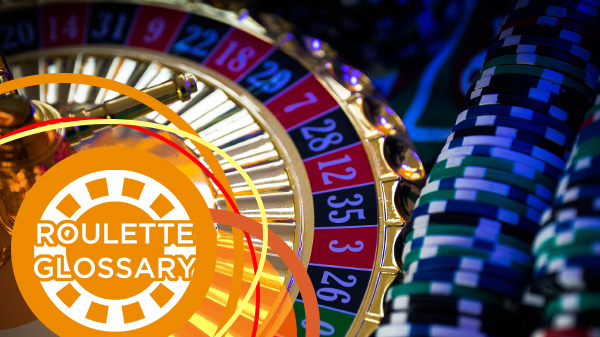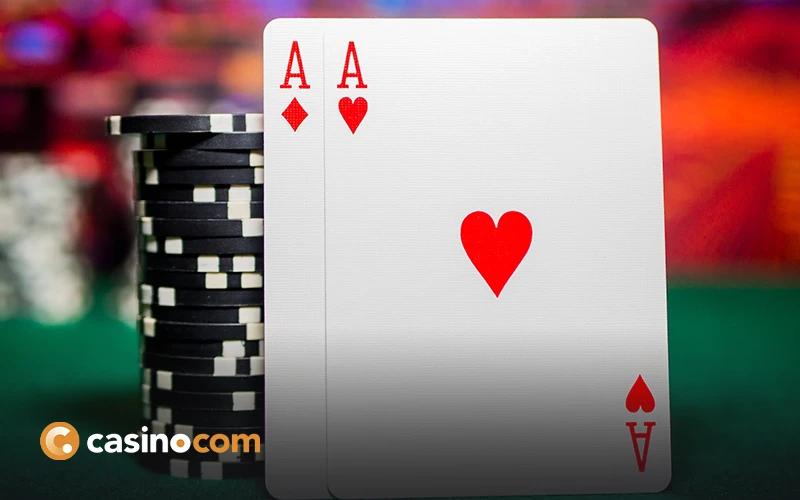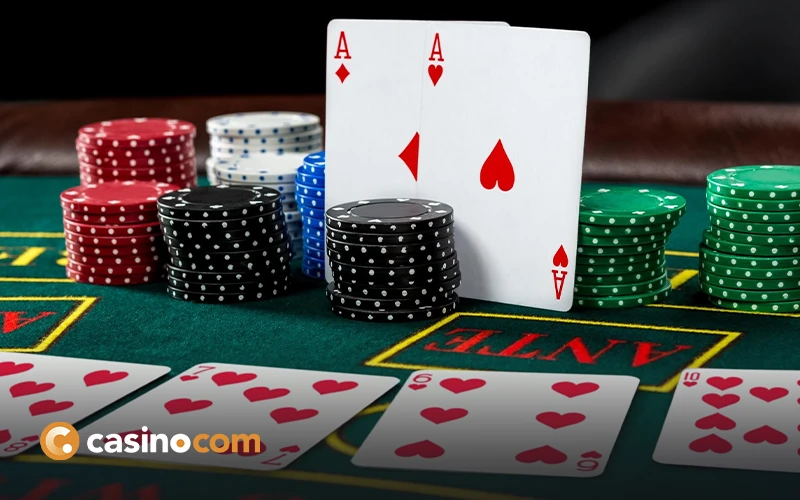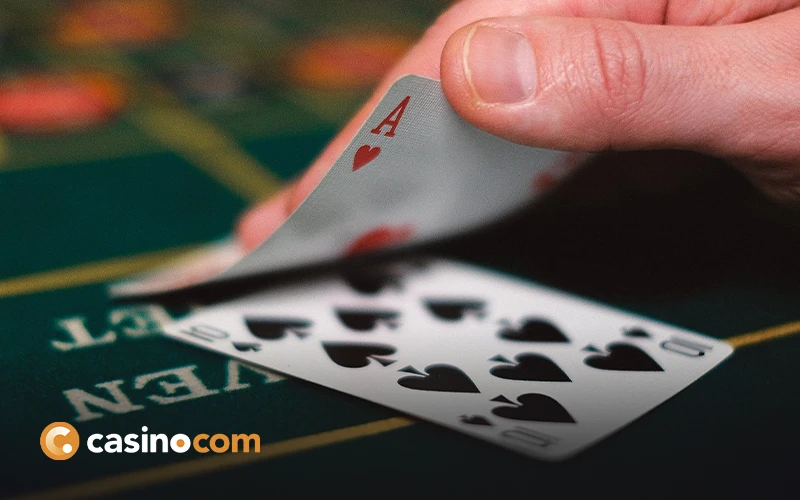Roulette is a simple game, but you may come across words that you haven’t seen before. So, we have created this short glossary to help you fully understand the most important roulette terms that you might not have seen before.
50/30/20 budget – A budgeting method popularized by US Senator Elizabeth Warren. Using this method, you set aside 50% of your income for important ‘needs’, 30% to ‘wants’, and the remaining 20% should be saved.
Action – Whenever a bet is placed during a specific round of Roulette, it is referred to as the “action.” Action can entail any bet, big or small.
Advantage play – This term describes various legal playing methods that reduce the house edge or give the player an edge over the casino. The most widely known type of advantage play is blackjack card counting.
Airball Roulette – A fairly unique and uncommon type of roulette wheel construction. Though it is a bit more complicated, it essentially works electronically by using air pressure.
American roulette – A variation of roulette that has two zero pockets (0 and 00), so which has 38 numbers in total to bet on, rather than the 37 numbers that European and French roulette have.
Andrucci system – A roulette betting system in which you watch the roulette wheel for approximately 35 spins and bet on the numbers that come in more often than the others.
Backtrack – There are multiple parts of the wheel. The Backtrack is the outer part of the wheel that remains stationary. This is where the ball is initially spun.
Bankroll – Your bankroll is the money you have set aside to play casino games.
Biased Wheel – A roulette wheel that possesses a specific imperfection, causing certain numbers or even sections of numbers to appear at a greater frequency than what is normal.
Blacks/Black Bet/Black Action – Any bet that is made using a black chip (typically $100).
Blaise Pascal – A French mathematician who is commonly believed to be the inventor of roulette.
Call bets – These are bets that cover all the numbers within certain sections of the roulette wheel. The most common call bets are Voisins du Zéro, Le Tiers du Cylindre, and Orphelins.
Cancellation Betting – This is a betting system that uses a series of numbers. When a winning bet is made, numbers are canceled. When a bet loses, numbers are added.
Casino Advantage – The “house” edge, the percentage of an advantage that the casino has over a player.
Chip – This is the marker you place on the roulette table’s betting area, to show the dealer which number or numbers you have chosen and how much you want to wager.
Columns – The numbers on a roulette table are arranged in three columns of 12 numbers, and you can bet on which column the ball will land in. Column bets cover the following numbers and pay out at 2:1 odds, but you lose your stake if the ball lands in a zero pocket:
-
First column: 1, 4, 7, 10 13, 16, 19, 22, 25, 28, 31, 34
-
Second column: 2, 5, 8, 11, 14, 17, 20, 23, 26, 29, 32, 35
-
Third column: 3, 6, 9, 12, 15, 18, 21, 24, 27, 30, 33, 36
Combination bets – Any type of roulette bet where chips are placed on more than one number can be classed as a combination bet.
Corner – Sometimes known as a square bet, this is an inside bet that covers four numbers, and which pays out at odds of 8/1. To place this type of bet, you put your chip on the corner where four numbers meet.
D’Alembert system – A negative progression betting system that requires you to add one unit to your bet every time you lose. For example, if your starting bet is £5, you would add that amount to the bet after every loss. When you win, you revert to the starting stake. The Contra D’Alembert is a variant of this system that requires you to increase your stake by one unit after every win.
Dozens – Outside bets that allow you to bet on whether the ball will land in a number from 1-12 (first dozen), 13-24 (second dozen), or 25-36 (third dozen). The bet pays out at 2:1 odds but you lose your stake if the ball lands in a zero pocket.
En prison – A rule specific to French roulette. When you make an even money bet and the ball lands on zero, your stake isn’t lost straight away. It instead stands for the next spin and if the bet comes in you get your stake back.
Even Money – When a wager pays off at exactly one-to-one. Roulette pays out even money on Black, Red, Odd, Even, High, and Low bets.
European roulette – A variation of roulette which has one zero pocket (0) but does not commonly offer the En Prison and La Partage rules.
Fibonacci system – A betting system that requires you to bet in a pattern that follows the famous Fibonacci sequence of numbers.
Five-Number Bet – Considered to be the worst possible bet you can make, this wager can only be made on American wheels. It is a single wager that 0, 00, 1, 2, or 3 will be the next to hit.
French roulette – A variation of roulette which has one zero pocket (0), along with unique rules such as En Prison and La Partage
Gambler’s Fallacy – The misconception that the results of roulette spins are affected by the outcomes of previous spins. In truth, the outcome of each roulette spin is random and not at all influenced by the winning numbers that have previously appeared.
High/Low – You can place an outside bet on whether the ball will land in a number from 1-18 (low) or 19-36 (high). The bet pays out at 1:1 odds if it comes in, but you lose your stake if the ball lands in a zero pocket (unless the la partage or en prison rules are in effect).
Hot/Cold Table – It is possible for winning and losing streaks to occur. When a table has seen a lot of wins, it is called a hot table. When there are more losses than wins, it is referred to as a cold table.
House edge – The mathematical advantage that a casino has over the player. The house edge is built into the rules of each game and in roulette it differs only according to the variant you play. The house edge for European roulette is 2.7%, while for American roulette it is almost double that at 5.26%.
Inside bets – Found in the rectangular betting zone on the roulette table, these are the bets that offer the biggest payouts but also have a smaller chance of coming up than others. They include straight, split, and corner bets.
James Bond betting system – A betting system that requires you to place specific inside bets, covering roughly two thirds of the numbers.
Jeu Zéro – The ‘zero game’ bet is a call bet that covers all the numbers on the roulette wheel between 12 and 15. The exact numbers covered (in the order they appear on the wheel) are: 12, 35, 3, 26, 0, 32, and 15.
La partage – A rule specific to French roulette that means you get half of your stake back if you make an even money bet and the ball lands on zero.
Labouchere system – A betting system that allows you to set your own betting sequence, based on the amount of money you want to win. After every win, you cross off one bet in the sequence, and the target is achieved when all bets have been crossed off.
Le Tiers du Cylindre – A call bet that covers all the numbers on the roulette wheel between 27 and 33. The exact numbers covered (in the order they appear on the wheel) are: 27, 13, 36, 11, 30, 8, 23, 10, 5, 24, 16, and 33.
Live roulette – This is a version of online roulette where a human dealer appears on the screen. This dealer spins the wheel and announces the results of each game.
Martingale system – A negative progression betting system which requires you to place even money bets (such as high/low, red/black) and double the size of your bet every time you lose. The Grand Martingale variant requires you to double your bet and then add your initial stake on top of that after every loss.
Mayer Line – A betting strategy in roulette where a small lost bet will see a small but incremental increase in the next wager. There is also a total of ten numbers that get erased in a line, leading to a ten-unit win.
Odd/even – You can place an outside bet on whether the ball will land in an odd number or an even number. The bet pays out at 1:1 odds if it comes in, but you lose your stake if the ball lands in a zero pocket (unless the la partage or en prison rules are in effect).
Outside bets – You will see these bets on the outside of the betting area. They include betting options that have the greatest chance of occurring, but relatively modest payouts. This is where you can wager on red or black, odd or even, and so on.
Parlay – In the event of a win, the bettor doubles their wager. Also called letting it “ride.”
Paroli betting system – A positive progression betting system that requires you to double your bet every time you win. After three consecutive wins, you revert to your initial stake.
Pockets – These are the different sections on the wheel that are marked with numbers, a zero, or a double zero.
Quarter Bet – This type of wager is one that encompasses four numbers on the next spin. Square and Corner Bets fall under the “Quarter” designation.
Red/black – You can place an outside bet on whether the ball will land in one of the 18 red numbers on the wheel, or one of the 18 black numbers. The bet pays out at 1:1 odds if it comes in, but you lose your stake if the ball lands in a zero pocket (unless the la partage or en prison rules are in effect).
Progressive strategies – These are betting systems where you either increase or decrease your stake, depending upon the result of the preceding spin. Martingale and Paroli are among the most popular progressive strategies here.
Reverse Labouchere system – Like the standard Labouchere system, this is a betting system that allows you to set your own betting sequence, based on the amount of money you want to win. With this variant, you cross a bet off the sequence after every loss.
Reverse Martingale system – A positive progression betting system that requires you to place even money bets and double the size of your bet every time you win. When you lose, you start again with your initial stake.
Section Slicing – A betting strategy where the wheel is essentially divided into sections. The division is based on which numbers have been hitting more often, discovering biases in the wheel.
Six Line – An inside bet that covers six numbers and which pays out at odds of 5/1. You place a six line bet by putting your chip on the intersection at the end of two rows.
Split – An inside bet that covers two numbers and which pays out at odds of 17/1. To place a split bet, you put your chip on the dividing line between two numbers.
Straight up – An inside bet that covers one number and which pays out at odds of 35/1.
Street – An inside bet that covers three numbers and which pays out at odds of 11/1. To place a street bet, you put your chip on the line at the end of a row of three numbers
Surrender – In a surrender, the casino will only take half of a player’s losing wager on even-money bets when either 0 or 00 hits, but most U.S. casinos don’t offer it as an option.
Random number generator (RNG) – This is an algorithm that is used on computer-generated roulette tables. It ensures that every spin is carried out on a completely random basis and that unpredictable, fair results are always achieved.
RTP – The return to player rate is a term that shows us how much the game should return to players in the long run, based on a huge number of spins of the relevant roulette wheel. It is the opposite of the house edge, so a 97% RTP is the same as a 3% house edge.
Voisins du Zéro – The ‘neighbours of zero’ bet is a call bet that covers all the numbers on the roulette wheel between 22 and 25. The exact numbers covered (in the order they appear on the wheel) are: 22, 18, 29, 7, 28, 12, 35, 3, 26, 0, 32, 15, 19, 4, 21, 2, and 25.
Wheel-Clocking – There are two ways of Wheel-Clocking. The first is to keep track of results in order to find patterns and determine wheel bias. The other is to either visually or electronically track the speed in order to more effectively predict where the ball lands.
Zero pockets – The pockets on the wheel featuring 0 and 00.

Did you know?
Did you know that roulette and its numbers have many nicknames? Perhaps the most famous is the Devil’s Game. This isn’t because roulette is favoured by Satan. No, it’s because all the numbers on the wheel add up to 666.

Previous: Roulette FAQs
Next: Roulette Guide





